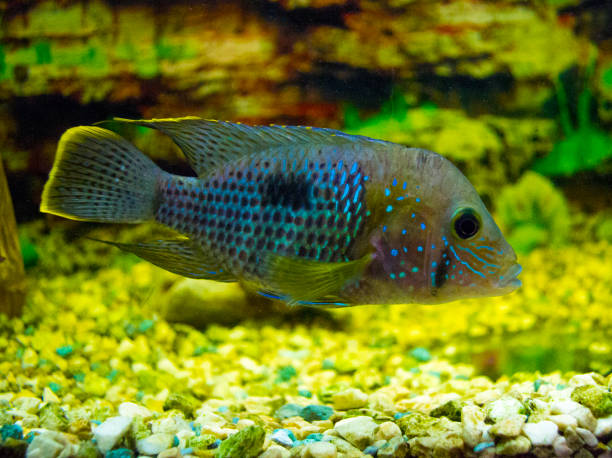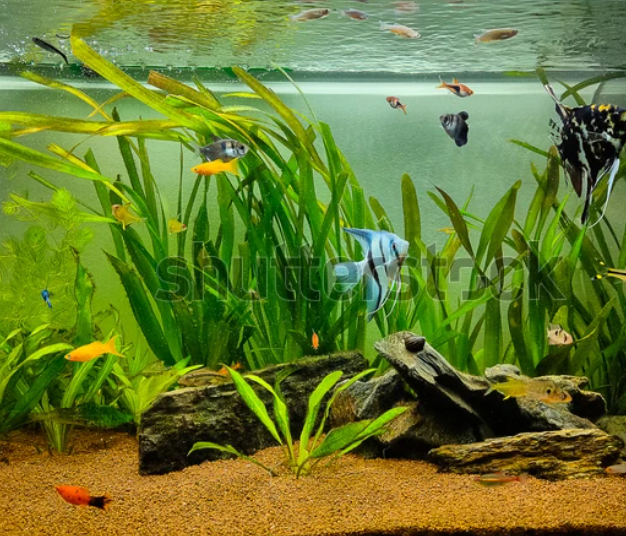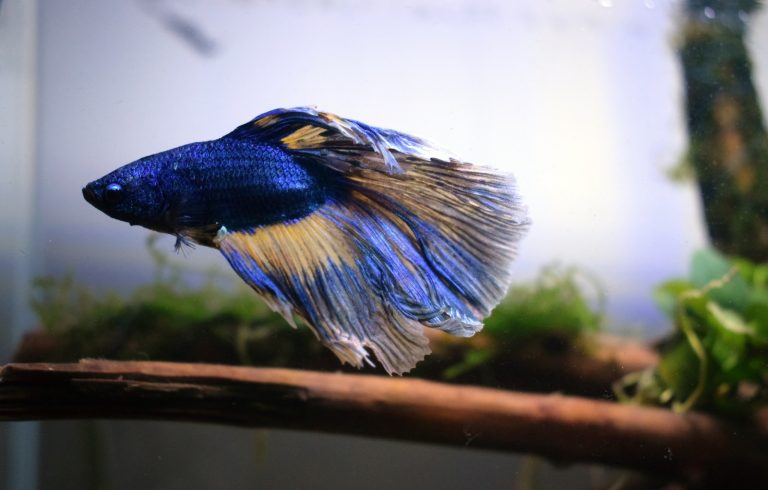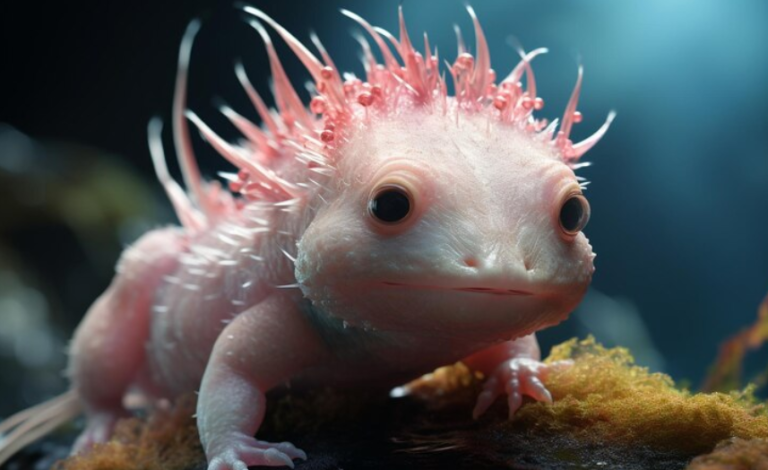Are you considering adding a stunning and vibrant fish to your aquarium? Look no further than the Blue Acara! This beautiful freshwater fish is known for its vibrant blue coloration and captivating personality. In this comprehensive guide, we will explore everything you need to know about Blue Acara for sale, from their origins and care requirements to where you can find them. Whether you’re a seasoned aquarist or a beginner, this article will provide you with all the information you need to ensure the well-being of your Blue Acara.

Origins of the Blue Acara
A Brief History of the Blue Acara Fish
The Blue Acara, scientifically known as Aequidens pulcher, is a species of cichlid that originates from Central and South America. It was first discovered in the early 19th century and has since become a popular choice among aquarium enthusiasts due to its stunning coloration and hardy nature.
Native Habitat and Distribution
Blue Acara fish are native to various regions in Central and South America, including countries like Belize, Guatemala, Honduras, and Mexico. They can be found in rivers, streams, and lakes with slow to moderate water flow. These habitats are typically rich in vegetation, providing the fish with ample hiding places and natural food sources.
Characteristics of Blue Acara Fish
Stunning Blue Coloration
One of the most striking features of Blue Acara fish is their vibrant blue coloration. The males typically exhibit more intense and vibrant blues compared to females. As they mature, their colors become even more prominent, making them a stunning addition to any aquarium.
Size and Lifespan
Blue Acara fish are relatively moderate in size compared to other cichlid species. On average, they reach a length of around 6 to 8 inches (15 to 20 cm) when fully grown. In optimal conditions, Blue Acara can live for up to 10 years, making them a long-term commitment for aquarists.
Temperament and Behavior
Blue Acara fish are known for their peaceful and friendly nature. They are generally compatible with other non-aggressive fish species, making them suitable for community tanks. However, it’s important to provide them with ample space and hiding spots to establish their territory and reduce potential aggression.
Setting Up the Perfect Aquarium for Blue Acara
Tank Size and Water Parameters
When setting up an aquarium for Blue Acara fish, it’s essential to consider their space requirements. A minimum tank size of 30 gallons (113 liters) is recommended for a pair of Blue Acara. However, if you plan to keep them in a community tank, a larger aquarium with a capacity of 50 gallons (189 liters) or more is preferable.
Maintaining stable water parameters is crucial for the well-being of Blue Acara. They thrive in slightly acidic to neutral water with a pH range of 6.5 to 7.5. The temperature should be maintained between 75°F and 82°F (24°C and 28°C), while the water hardness should range from 4 to 10 dGH.
Substrate and Decorations
Blue Acara fish appreciate a well-decorated aquarium with ample hiding spots and territories. A sandy or fine-grained substrate is recommended, as it mimics their natural habitat. Adding driftwood, rocks, and live plants will provide them with hiding places and create a visually appealing environment.
Filtration and Lighting
To ensure optimal water quality, a reliable filtration system is necessary for the Blue Acara aquarium. A combination of mechanical, biological, and chemical filtration is recommended to remove debris, maintain biological balance, and remove harmful substances. Additionally, providing moderate lighting with a timer will help simulate natural day and night cycles, promoting the well-being of the fish.
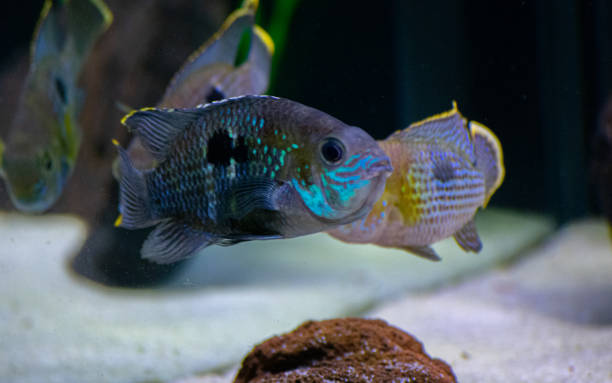
Feeding Blue Acara Fish
A Varied Diet for Optimal Health
Blue Acara fish are omnivorous and require a well-balanced diet to thrive. Offering a variety of high-quality foods will provide them with the necessary nutrients for growth and vibrant coloration. Their diet should consist of a mix of protein-rich foods, such as high-quality pellets, flakes, and frozen or live foods.
Best Foods for Blue Acara
When it comes to feeding Blue Acara fish, there are several options to consider. High-quality commercial cichlid pellets and flakes are readily available and provide essential nutrients. Additionally, offering live or frozen foods like brine shrimp, bloodworms, and daphnia will help replicate their natural diet and enhance their coloration.
Feeding Frequency and Portions
Blue Acara fish should be fed twice a day with an amount they can consume within a few minutes. Overfeeding should be avoided, as it can lead to water quality issues and obesity. Observing their feeding behavior will help you determine the appropriate portion size and adjust accordingly.
Blue Acara Breeding
Identifying Male and Female Blue Acara
Distinguishing between male and female Blue Acara fish can be challenging, especially when they are young. However, as they mature, several visual cues can help determine their gender. Males often display more vibrant colors, elongated dorsal and anal fins, and develop a prominent forehead hump.
Females, on the other hand, tend to have shorter fins and a rounder body shape. During the breeding season, females may also develop a pinkish or orange coloration on their bellies.
Breeding Behavior and Requirements
Breeding Blue Acara fish can be a rewarding experience. To encourage breeding behavior, it’s important to provide them with optimal conditions. Increase the temperature of the aquarium to around 78°F to 82°F (25°C to 28°C) and ensure excellent water quality. Provide flat rocks or broad-leaved plants as potential spawning sites.
During courtship, the male will display vibrant colors, flare its fins, and perform intricate dances to attract the female. Once the female accepts the male’s advances, they will engage in a spawning ritual, during which the female lays her eggs on the selected surface. The male will then fertilize the eggs and take on the responsibility of guarding and caring for the fry.
Caring for Blue Acara Fry
After the eggs have been fertilized, it’s crucial to provide a safe and suitable environment for the fry. The male Blue Acara will guard the nest and ensure the eggs receive proper care. Once the fry hatch, they will rely on their yolk sac for nutrition initially. After a few days, they will begin swimming freely, at which point you can introduce finely crushed flake foods and baby brine shrimp to their diet.
Maintaining stable water parameters and ensuring the fry have access to suitable food sources will promote their growth and survival.
Common Diseases and Health Issues
Preventing Diseases in Blue Acara Fish
Maintaining excellent water quality is crucial for preventing diseases in Blue Acara fish. Regular water changes, monitoring ammonia and nitrite levels, and avoiding overfeeding are essential practices. Quarantining new fish before introducing them to the main aquarium can also help prevent the introduction of diseases.
Recognizing and Treating Common Health Issues
Despite your best efforts, Blue Acara fish may occasionally encounter health issues. Some common diseases and ailments that can affect them include ich, fin rot, and swim bladder disorders. It’s important to familiarize yourself with the symptoms of these conditions, such as white spots, torn or decaying fins, and abnormal swimming behavior.
If you notice any signs of illness, it’s crucial to promptly isolate the affected fish and seek appropriate treatment. Consult with a knowledgeable veterinarian or aquatic specialist to determine the most effective treatment options.
Quarantine Procedures
When introducing new fish to your aquarium, it’s essential to implement a quarantine period. Quarantining allows you to closely observe the new fish for any signs of illness or parasites before introducing them to the main tank. Set up a separate quarantine tank and closely monitor the fish for a minimum of two weeks. During this time, you can treat them for any potential ailments and ensure they are healthy before joining the existing fish.
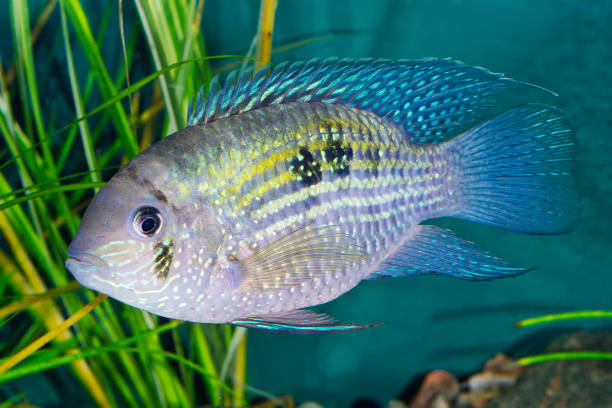
Where to Find Blue Acara for Sale
Local Fish Stores and Aquarium Clubs
One of the best places to find Blue Acara for sale is your local fish store. Visit nearby aquarium shops and inquire about their current stock. The advantage of purchasing from a local store is the ability to see the fish in person and assess their health and condition before making a purchase. Additionally, aquarium clubs and societies often hold events where hobbyists trade or sell fish, including Blue Acara.
Online Retailers and Dedicated Breeders
The internet offers a wide range of options when it comes to finding Blue Acara for sale. Numerous online retailers specialize in aquarium fish and deliver them directly to your doorstep. When purchasing online, be sure to choose reputable sellers with positive reviews and a strong track record of delivering healthy fish. Dedicated breeders are another excellent option, as they often prioritize the health and well-being of their fish.
Tips for Selecting Healthy Blue Acara
When selecting Blue Acara fish, there are several factors to consider. Look for fish that appear active, have vibrant colors, and exhibit no signs of disease or injury. Avoid fish with torn fins, sunken bellies, or spots on their bodies. It’s also important to observe their behavior and ensure they interact well with other fish in the tank.
Frequently Asked Questions (FAQs)
Q1. What is the average price of Blue Acara for sale?
The price of Blue Acara can vary depending on various factors, such as the size, coloration, and source. On average, you can expect to pay around $10 to $20 per fish.
Q2. Can Blue Acara be kept with other fish?
Blue Acara are generally peaceful and can be kept with other non-aggressive fish species. However, it’s important to consider the size and temperament of the tankmates to ensure compatibility.
Q3. How can I tell the gender of a Blue Acara fish?
Distinguishing between male and female Blue Acara can be challenging when they are young. As they mature, males develop more vibrant colors, elongated fins, and a prominent forehead hump. Females tend to have shorter fins and a rounder body shape.
Q4. Do Blue Acara require a specific water temperature?
Blue Acara prefer water temperatures between 75°F and 82°F (24°C and 28°C). It’s important to maintain stable water parameters within this range for their optimal health and well-being.
Q5. Are Blue Acara difficult to care for?
Blue Acara are generally considered to be moderately easy to care for, making them suitable for both beginners and experienced aquarists. As long as their basic needs are met, they can thrive in a well-maintained aquarium.
Q6. Can Blue Acara be kept in a community tank?
Blue Acara can be kept in a community tank with other non-aggressive fish species. However, it’s important to provide ample space and hiding spots to reduce potential aggression and establish territories.
Conclusion
Blue Acara fish are a stunning addition to any aquarium. Their vibrant blue coloration, peaceful temperament, and moderate care requirements make them a popular choice among aquarists. By providing them with a suitable environment, a balanced diet, and proper care, you can enjoy the beauty and companionship of Blue Acara for years to come.
Remember to research reputable sources and consult with experienced aquarists or professionals for additional guidance specific to your setup. Happy fishkeeping!
